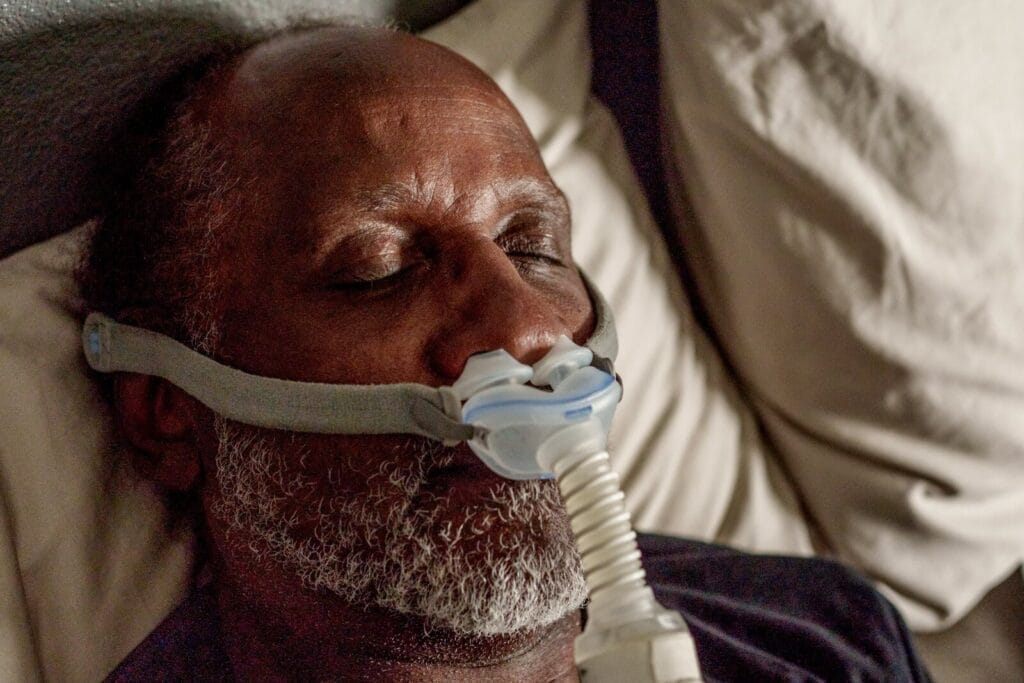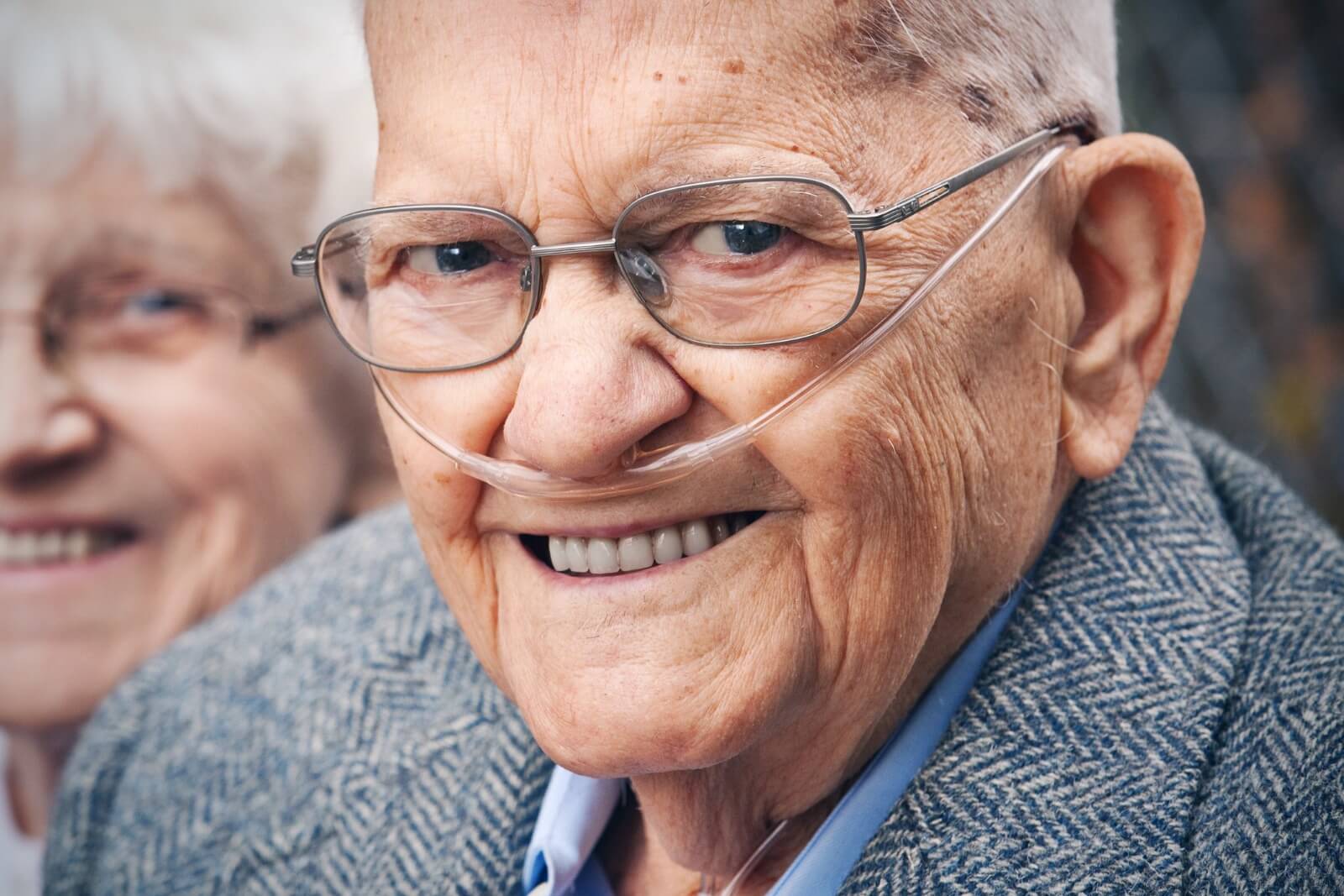
Using a CPAP (continuous positive airway pressure) machine can greatly improve sleep quality for people with sleep apnea, helping them wake up feeling refreshed and positively impacting health in other ways. The benefits of using a CPAP machine include reducing the risk of developing high blood pressure, diabetes, and Alzheimer’s disease.
Despite the significant benefits of using CPAP machines, some seniors find it inconvenient or downright uncomfortable, leading many to stop using them altogether. However, with the right tools and strategies, using a CPAP machine can become a more comfortable and manageable part of your nightly routine. Below, we outline common CPAP machine challenges and practical solutions to help you get the most out of your machine and enjoy the benefits of sleeping soundly through the night.
The mask is uncomfortable
One of the most common complaints about using a CPAP machine is that the mask is uncomfortable. You might struggle to get a seal, it might fall off during the night, or it may simply feel irritating against the skin. Whatever the issue, trying a different mask style might make all the difference.
Depending on your preferences and sleep style, certain types of masks may be more comfortable than others. Different CPAP masks you can choose from include the following:
- Full face masks cover your mouth and nose.
- Nasal masks cover the nose but not the mouth.
- Nasal pillow masks rest against or insert into the nostrils.
- Oral masks cover only the mouth but not the nose.
Using a liner can also increase comfort, keep your mask in place, and prevent rubbing. Liners you can try include:
- Disposable mask liners for full face masks.
- Washable cloth mask liners for full face masks.
- Gel pads for the bridge of your nose.
- Washable nose pad liners for nasal masks.
The straps are uncomfortable
Straps that dig into your skin or leave marks can make using a CPAP unpleasant. If loosening them doesn’t fix the issue or compromises the seal on your mask, you might want to try a different strap style, including the following:
- Headgear loops fit around the ears for those who use nasal pillow masks.
- Chin straps keep the mouth closed and encourage nose breathing.
- Anti-leak straps go over the ears and behind the head to keep the face mask in place.
Straps may be universal or designed specifically for different mask types or models. Be sure to check compatibility with your machine and mask type.
Strap pads are another option. Products like Pad a Cheek strap pads, Snuggle Skins Cheeks strap covers, or AVEEN neck pads can make straps more comfortable.
Breathing forced air is uncomfortable
Breathing forced air can be unpleasant. Some users feel claustrophobic or struggle to breathe against the airflow. If this is affecting your sleep, a simple accessory might help.
The SleepRes V-Com is a small connector that reduces air pressure from your CPAP machine, making it easier to breathe without reducing the machine’s effectiveness. The device fits between the hose and mask and is compatible with most machines. Just be sure to replace it every three months.
Even with the help of the SleepRes V-Com, some people struggle to get comfortable using a CPAP machine regularly. Many health care providers recommend using the machine while awake and watching TV or reading to get accustomed to breathing with it.
You wake up with a dry nose or mouth
Dryness in the nose or mouth is a common side effect of CPAP use, especially for seniors. Increasing the humidity on your device might help, but upgrading to heated tubing may also be a good idea. According to Verywell Health, “When used in combination with a heated humidifier, heated tubing can improve the temperature and humidity of the pressurized air delivered by CPAP.” Without heated tubing, the moisture may condense in your tubing rather than staying in the air. Tubing design varies by brand and model, so be sure to choose heated tubing that is compatible with your machine.
The noise makes it hard to sleep
If you find it difficult to sleep because your CPAP machine is too loud:
- Start by cleaning the air filter and making sure it isn’t blocked.
- Try wearing earplugs or listening to music or white noise at night.
- Use a tubing extension adapter and additional tubing to move the machine farther away from the bed, which can reduce the noise level.
CPAP machine tubing gets in the way
Managing CPAP tubing can be frustrating, especially if you adjust your sleeping position at night. A hose holder suspends the tubing over the bed and away from your face, making it easier to roll over and sleep on your side without getting tangled.
Consider using a CPAP-friendly pillow. These pillows designed for CPAP users feature contoured sides to accommodate masks and tubing. Some, like the CPAPMax 2.0 pillow, have hose tethers to keep the hose in place throughout the night.
Cleaning the equipment is a hassle
Proper hygiene is key to effective CPAP use, but cleaning all the components can feel like a chore. Unfortunately, the best way to keep your CPAP equipment clean is to do it by hand.
Specialized tube brushes are relatively inexpensive and can make the job easier and more efficient. Only use distilled water in your machine to prevent mineral buildup. Mask liners can reduce the need for frequent mask cleaning.
Having additional clean masks, tubing, and filters on hand can be convenient. It allows you to swap out parts for clean accessories without having to clean them. Then, you can batch-clean accessories at a more convenient time.
Find a CPAP machine solution that works for you
It’s perfectly normal to experience challenges with your CPAP machine, but giving up on treatment isn’t the answer. With a little experimentation and the right accessories, you can find a setup that works comfortably for you. By addressing these common issues with the tips on this list, you’ll improve your chances of using your CPAP machine consistently, giving yourself the best opportunity to enjoy restful, uninterrupted sleep and better overall health.








